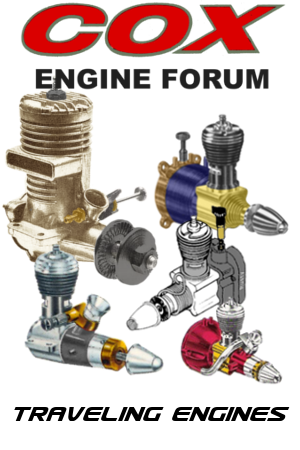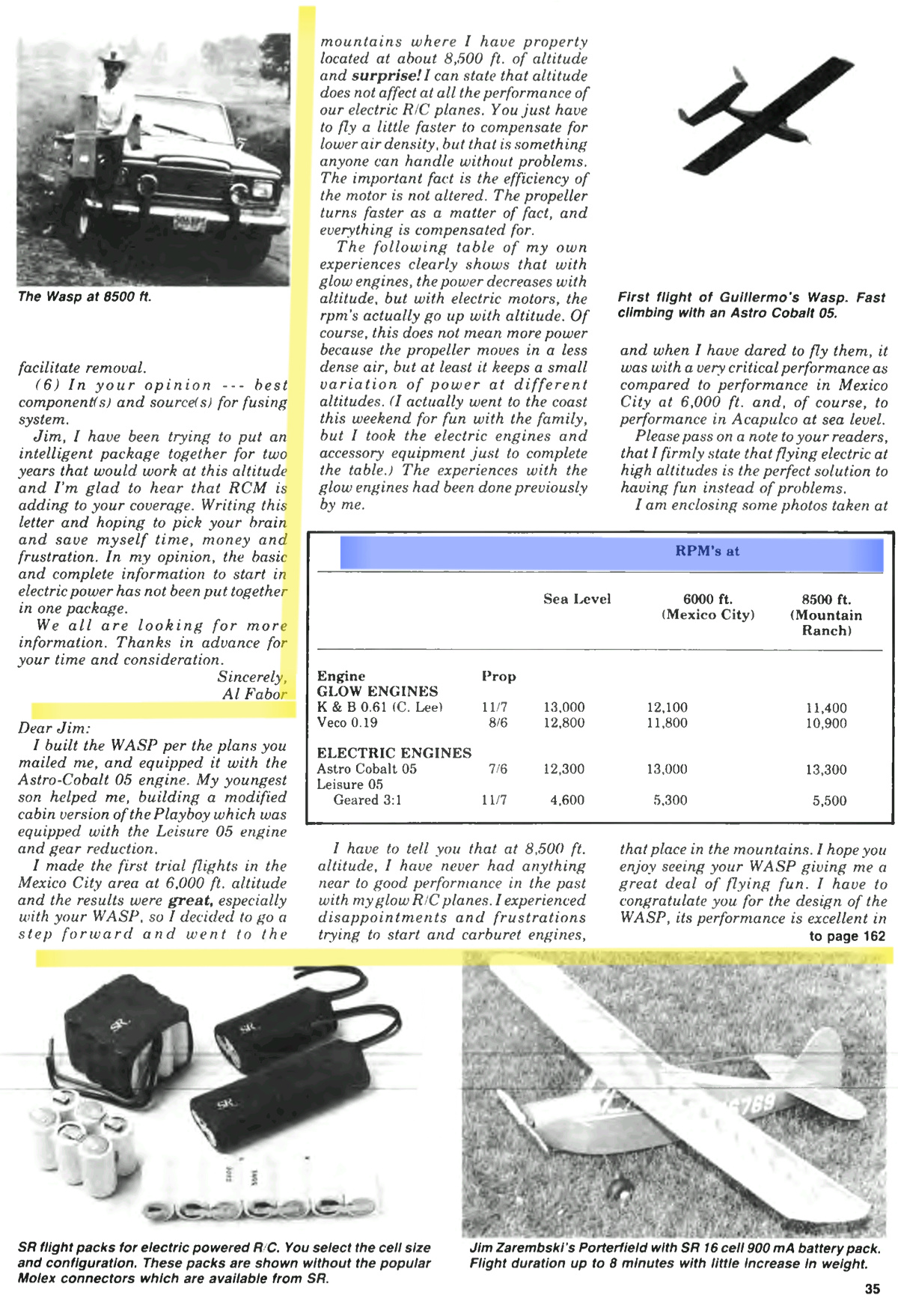Log in
Search
Latest topics
» Golden Bee basic running problemby roddie Yesterday at 10:51 pm
» Simple Gliders
by rdw777 Yesterday at 6:25 pm
» Foam hand kids glider converted to 0.049 CL
by rdw777 Yesterday at 6:11 pm
» Weird search for a single comic from an old Mad Magazine
by Kim Yesterday at 1:44 pm
» Scientific "Zipper" Build...Zipper Flys!.
by getback Yesterday at 7:27 am
» Cox .049 Tee Dee engines back in stock (limited availablility)
by GallopingGhostler Yesterday at 1:05 am
» Very off-topic.........Time passes and not always for the best......
by rsv1cox Thu Jul 25, 2024 2:47 pm
» Roddie-Rigger.. a 2005 original design
by roddie Wed Jul 24, 2024 11:48 pm
» Jim Walker Bonanza etc.
by rsv1cox Wed Jul 24, 2024 6:30 pm
» Throttles for Cox Tee Dee .049 / .020 / .010 engines --- videos
by sosam117 Wed Jul 24, 2024 8:54 am
» Introducing our Cox .049 TD Engines
by Admin Tue Jul 23, 2024 2:00 am
» Project Cox .049 r/c & Citabrian Champion
by getback Mon Jul 22, 2024 4:14 pm
Cox Engine of The Month
July-2024
robot797's
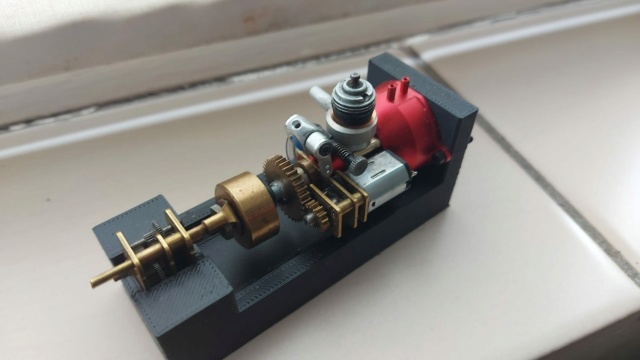
"ULTIMITE COX 010: it has a clutch, E starter, throttle, exhaust, aluminum tank, aluminum venturi, gearbox with forward and reverse, and now its on a custom drawn and printed stand"

PAST WINNERS
robot797's

"ULTIMITE COX 010: it has a clutch, E starter, throttle, exhaust, aluminum tank, aluminum venturi, gearbox with forward and reverse, and now its on a custom drawn and printed stand"

PAST WINNERS
Altitude Effect
Page 1 of 1
 Re: Altitude Effect
Re: Altitude Effect
The reality of the electric motor is that power was also down from sea level if using the same prop. With a given motor and prop, at 8500' you can expect about 81% of sea level power. An engine could be expected to make 75% in the same situation. The difference is that the electric motor spins faster increasing pitch speed while the engine will slow. Thrust will obviously decrease in both cases.
When I was working in the hobby, I always recommended a larger prop to pull close to sea level current at flying altitude.
When I was working in the hobby, I always recommended a larger prop to pull close to sea level current at flying altitude.

gkamysz- Gold Member

- Posts : 390
Join date : 2018-02-22
Location : Chicagoland
 Re: Altitude Effect
Re: Altitude Effect
In HVAC, electric fans area considered as constant volume devices. They move the same amount of air, the only thing is at elevation, the density of air is less. The data from the RCM trial runs at the two different elevations more or less bear this. Since the aircraft weight is the same but density is less requires a faster velocity to keep airborne. Hence this is why needing more RPM.
The difference is more notable on air breathing glow engines. With lower density air requires a greater combustion chamber to produce the same amount of power.
I've more or less equated efficiency by simply taking the ratio of the air density at elevation divided by sea level. Where we are at, 4,300 ft. elevation (1311 m), air density is around 12.5 psia. At sea level it is 14.7 psia. 12.5/14.7 = 0.85 or 85% of sea level performance. In other words, there may be a 15% reduction in available HP at my elevation.
When I was in Gallup, NM at 6,500 ft. (1981 m), air density is around 11.5 psia or 78% of sea level, so loss was around say 25%.
This is why we go a size up on engines, to help compensate. A .19 at sea level is compensated with a .25 - .28 at elevation. A .35 is replaced with a .45, and so forth.
Anyway, that is my simplistic way of viewing it, right, wrong or indifferent.
With electric motors, you don't have combustion efficiency loss, just need to up the rpm (seems more electric powered planes use more power than glow to start with) or go with a prop slightly larger in diameter or increased in pitch, IMO.
Oh, and I wanted to add. In Gallup, I was able to still fly my Golden Bee powered Q-Tee, but it would fly okay on a 6x3 prop. The Q-Tee has very generous wing area, which allowed it to do this. At sea level, a 5.25x4 prop flew it the same as a 6x3, no perceptable change in velocity during level flight. But at elevation, the difference was remarkable. It barely lumbered along with the smaller diameter prop, but moved out fine with the 6x3.
The difference is more notable on air breathing glow engines. With lower density air requires a greater combustion chamber to produce the same amount of power.
I've more or less equated efficiency by simply taking the ratio of the air density at elevation divided by sea level. Where we are at, 4,300 ft. elevation (1311 m), air density is around 12.5 psia. At sea level it is 14.7 psia. 12.5/14.7 = 0.85 or 85% of sea level performance. In other words, there may be a 15% reduction in available HP at my elevation.
When I was in Gallup, NM at 6,500 ft. (1981 m), air density is around 11.5 psia or 78% of sea level, so loss was around say 25%.
This is why we go a size up on engines, to help compensate. A .19 at sea level is compensated with a .25 - .28 at elevation. A .35 is replaced with a .45, and so forth.
Anyway, that is my simplistic way of viewing it, right, wrong or indifferent.
With electric motors, you don't have combustion efficiency loss, just need to up the rpm (seems more electric powered planes use more power than glow to start with) or go with a prop slightly larger in diameter or increased in pitch, IMO.

Oh, and I wanted to add. In Gallup, I was able to still fly my Golden Bee powered Q-Tee, but it would fly okay on a 6x3 prop. The Q-Tee has very generous wing area, which allowed it to do this. At sea level, a 5.25x4 prop flew it the same as a 6x3, no perceptable change in velocity during level flight. But at elevation, the difference was remarkable. It barely lumbered along with the smaller diameter prop, but moved out fine with the 6x3.

GallopingGhostler- Top Poster


Posts : 5432
Join date : 2013-07-13
Age : 70
Location : Clovis NM or NFL KC Chiefs
 Re: Altitude Effect
Re: Altitude Effect
Using more nitro content fuel at high altitude is a problem solver? Instead of using larger diameter propeller?

Levent Suberk- Diamond Member

- Posts : 2228
Join date : 2017-12-24
Location : Türkiye
 Re: Altitude Effect
Re: Altitude Effect
With half-A engines, at least I was already using high nitro fuel (25%). On a Golden Bee, a 6x3 Masters prop matches best HP thrust output as in the air, it is at max HP RPM. Q-Tee has generous wing area and with smaller fuselage cross section, is also reasonably clean aerodynamically at the speeds it flies (i.e., around 35 MPH or 57 KMH). Of course at elevation, it will fly slightly faster with lower air density.
Some years back, there was someone posting from one of the major cities in the country of Chile, flying at elevations above 12,000 ft. or so. It would be good if we had a friend living in very high elevation, who would post here, then we could have some very useful feedback.
I don't know about others, but I have found the scientific engine test results in magazine articles archived on Sceptre Flight, to be very useful. It helps one to know where the torque and brake horsepower curves on a given fuel is, plus results by various props, so they can select a suitable range of props to test out.
It is not all about RPM, as a tach test post may show, but about the ability to produce the proper amount of thrust in flight given other factors such as airplane aerodynamics, climate and elevation factors, and etc. One can actually exceed the BHP where a higher turning prop is producing less work (thrust).
This I actually got to see on a 1966 Enya .09-III TV. Peter Chinn mentioned that there was no point in trying out props less than 7x4. This was because its BHP peaked at a lower RPM than the modern Schneurles or Cox Tee Dee engines. Using the engine in a .049 plane, I was experiencing .049 reed valve performance on an APC 7x3, but really moved out on a wood 7x6.
This is why a Brown Jr. 1/4 HP ignition engine was able to power an 8 foot (2400 mm) wingspan cabin free flight using a 14x6 prop at 6,000 RPM. This is the same HP as with say a modern sport Schneurle .19 spinning a 7 or 8 inch prop. It put the wind out sufficiently from the fuselage sides.






Some years back, there was someone posting from one of the major cities in the country of Chile, flying at elevations above 12,000 ft. or so. It would be good if we had a friend living in very high elevation, who would post here, then we could have some very useful feedback.
I don't know about others, but I have found the scientific engine test results in magazine articles archived on Sceptre Flight, to be very useful. It helps one to know where the torque and brake horsepower curves on a given fuel is, plus results by various props, so they can select a suitable range of props to test out.
It is not all about RPM, as a tach test post may show, but about the ability to produce the proper amount of thrust in flight given other factors such as airplane aerodynamics, climate and elevation factors, and etc. One can actually exceed the BHP where a higher turning prop is producing less work (thrust).
This I actually got to see on a 1966 Enya .09-III TV. Peter Chinn mentioned that there was no point in trying out props less than 7x4. This was because its BHP peaked at a lower RPM than the modern Schneurles or Cox Tee Dee engines. Using the engine in a .049 plane, I was experiencing .049 reed valve performance on an APC 7x3, but really moved out on a wood 7x6.
This is why a Brown Jr. 1/4 HP ignition engine was able to power an 8 foot (2400 mm) wingspan cabin free flight using a 14x6 prop at 6,000 RPM. This is the same HP as with say a modern sport Schneurle .19 spinning a 7 or 8 inch prop. It put the wind out sufficiently from the fuselage sides.






GallopingGhostler- Top Poster


Posts : 5432
Join date : 2013-07-13
Age : 70
Location : Clovis NM or NFL KC Chiefs
 Re: Altitude Effect
Re: Altitude Effect
George, I also consider the engine output curves (refer e.g. to COX Engines/Performance at
https://www.mh-aerotools.de/airfoils/cox_frameset.htm) when trying to select the best prop matching the given COX engine...Once you find the best prop that the engine spins at the rpm in the air where the engine output is at its peak on the curve, you bring the best out of the engine/prop combo.
The Max output on the engine shaft (Output = Torque x angular speed) converts into the highest achievable thrust performance (= F plane drag force x v airplane speed)
https://www.mh-aerotools.de/airfoils/cox_frameset.htm) when trying to select the best prop matching the given COX engine...Once you find the best prop that the engine spins at the rpm in the air where the engine output is at its peak on the curve, you bring the best out of the engine/prop combo.
The Max output on the engine shaft (Output = Torque x angular speed) converts into the highest achievable thrust performance (= F plane drag force x v airplane speed)

balogh- Top Poster



Posts : 4803
Join date : 2011-11-06
Age : 65
Location : Budapest Hungary
 Re: Altitude Effect
Re: Altitude Effect
András, yes, you tread on familiar turf.balogh wrote:George, I also consider the engine output curves (refer e.g. to COX Engines/Performance at
https://www.mh-aerotools.de/airfoils/cox_frameset.htm) when trying to select the best prop matching the given COX engine...Once you find the best prop that the engine spins at the rpm in the air where the engine output is at its peak on the curve, you bring the best out of the engine/prop combo.
The Max output on the engine shaft (Output = Torque x angular speed) converts into the highest achievable thrust performance (= F plane drag force x v airplane speed)
Actually, the model plane engine BHP & Torque curves remind me a lot of the pump curves I used to look at in selecting or evaluating pumps. I was more intimate with the equations, pipe friction factors, air duct sections and friction, etc. Fluid Dynamics was one of my favorite classes, I decided to take the graduate level Fluids course for undergraduate credit. It's why I switched from electrical to mechanical after my second year.
(I thought electrical engineers believe in imaginary numbers and people.)

Now that I am old, I have less interest in the academics and more interest in the fun factor of model airplanes.





GallopingGhostler- Top Poster


Posts : 5432
Join date : 2013-07-13
Age : 70
Location : Clovis NM or NFL KC Chiefs
 Re: Altitude Effect
Re: Altitude Effect
I remember when I built a Midway Models Buzzard Bombshell kit (50-inch wingspan).
I installed a PAW 09 (Texaco model) in the nose.
Here at home (Plainfield, IL -- suburb of Chicago, elevation 630 above sea level.) I had a 9x6 Taipan prop on it.
Started the engine up and that PAW 09 was not happy turning that 9x6 Taipan prop.
You could hear that motor laboring (like it was over compressed - which it wasn't) as it was flying.
Just too much pitch.
So, I switched to a 9x4 Taipan prop and the PAW 09 sounded happier.
Now time for the SAM Texaco contest in end of September.
The contest was out at Colorado Springs (higher elevation than at home)
So, I put back on the 9x6 Taipan and out in the thinner air (higher elevation)
the PAW 09 was happy swinging that prop at the Higher elevation.
If you ever fly full size with a fix pitch prop, you know at sea level the take-off will be shorter than at a higher level.
Something to remember when you have takeoff with full fuel at sea level verses only 1/2 the fuel a mile high airport.
Seen some accidents when new pilot's take-off from sea level airports verses higher elevation airports.
Not compensating for the thinner air (with a fixed prop.)
I installed a PAW 09 (Texaco model) in the nose.
Here at home (Plainfield, IL -- suburb of Chicago, elevation 630 above sea level.) I had a 9x6 Taipan prop on it.
Started the engine up and that PAW 09 was not happy turning that 9x6 Taipan prop.
You could hear that motor laboring (like it was over compressed - which it wasn't) as it was flying.
Just too much pitch.
So, I switched to a 9x4 Taipan prop and the PAW 09 sounded happier.
Now time for the SAM Texaco contest in end of September.
The contest was out at Colorado Springs (higher elevation than at home)
So, I put back on the 9x6 Taipan and out in the thinner air (higher elevation)
the PAW 09 was happy swinging that prop at the Higher elevation.
If you ever fly full size with a fix pitch prop, you know at sea level the take-off will be shorter than at a higher level.
Something to remember when you have takeoff with full fuel at sea level verses only 1/2 the fuel a mile high airport.
Seen some accidents when new pilot's take-off from sea level airports verses higher elevation airports.
Not compensating for the thinner air (with a fixed prop.)

sosam117- Diamond Member

- Posts : 1310
Join date : 2016-03-23
Location : Suburb of Chicago, Illinois
 Re: Altitude Effect
Re: Altitude Effect
sosam117 wrote:I remember when I built a Midway Models Buzzard Bombshell kit (50-inch wingspan). I installed a PAW 09 (Texaco model) in the nose. Here at home (Plainfield, IL -- suburb of Chicago, elevation 630 above sea level.) I had a 9x6 Taipan prop on it. Started the engine up and that PAW 09 was not happy turning that 9x6 Taipan prop. You could hear that motor laboring (like it was over compressed - which it wasn't) as it was flying. Just too much pitch. So, I switched to a 9x4 Taipan prop and the PAW 09 sounded happier.
Now time for the SAM Texaco contest in end of September. The contest was out at Colorado Springs (higher elevation than at home) So, I put back on the 9x6 Taipan and out in the thinner air (higher elevation) the PAW 09 was happy swinging that prop at the Higher elevation.
If you ever fly full size with a fix pitch prop, you know at sea level the take-off will be shorter than at a higher level. Something to remember when you have takeoff with full fuel at sea level verses only 1/2 the fuel a mile high airport. Seen some accidents when new pilot's take-off from sea level airports verses higher elevation airports. Not compensating for the thinner air (with a fixed prop.)
Referencing your last statement, for example, this short crash video of an otherwise beautiful Stinson 108-3 during a high elevation takeoff (serious pilot error), fortunately all survived, although pilot was seriously injured:
http://www.avweb.com/avwebflash/news/stinson_crash_cockpit_video_ntsb_faa_207184-1.html.
AVweb wrote:AVweb on YouTube wrote:
YouTube - Airplane Crash In-Cockpit Footage: Stinson 108-3 (3 min. 50 sec.)
Glenn Pew for AVweb.com. Video of a plane crash as it was experienced from the right seat, inside the cockpit. The accident took place on Saturday June 30, 2012 near Bruce Meadows airstrip, not far from Stanley, Idaho. At the time of this report, information was preliminary and subject to change, but some had been collected by the NTSB. The aircraft is a Stinson model 108-3, a 165 horsepower single-engine high-wing propeller-driven plane capable of carrying four, plus full fuel, and light baggage. All four occupants survived the crash with the pilot suffering the worst injury. The cause of the crash is yet undetermined, but an aircraft's performance is dependent, among other things, on the density of the air it moves through. The pilot appears to have faced "high density altitude" conditions which degrade an aircraft's takeoff and climb performance.
The aircraft came down near Bruce Meadows airstrip near Stanley, Idaho. The strip offers 5,000 feet of grass and dirt at an elevation of 6,370 feet. Weather at the time of the accident included an altimeter setting of 30.00 inches Hg with a temperature of 27-degrees Centigrade and a dew point of three. The observations result in a density altitude of 9,167 feet. The four had flown into the airstrip earlier in the day and had reportedly gone hiking before attempting their departure. The video shows that the aircraft becomes airborne before settling to the ground and then gaining altitude. A passenger told the NTSB the Stinson never made it more than about 70 feet above the treetops before settling again — this time, into the trees.

GallopingGhostler- Top Poster


Posts : 5432
Join date : 2013-07-13
Age : 70
Location : Clovis NM or NFL KC Chiefs
 Re: Altitude Effect
Re: Altitude Effect
If that plane had a variable prop, The pilot could have added more pitch to help with more thrust at the higher altitude?
With a fixed blade prop, you don't have a choice.
With a fixed blade prop, you don't have a choice.

sosam117- Diamond Member

- Posts : 1310
Join date : 2016-03-23
Location : Suburb of Chicago, Illinois
 Re: Altitude Effect
Re: Altitude Effect
NTSB report for the above crash, https://aviation-safety.net/wikibase/146586 It was well beyond rated density altitude.
The engine can only make so much power for atmospheric conditions. Adding pitch would reduce RPM, output power, and climb rate. This is the fixed pitch climb/cruise prop selection compromise. Variable pitch prop may or may not improve take off performance compared to fixed prop selection. I don't fly, but this is basic engine/prop stuff and there is plenty info online. High density altitude with constant speed prop will also have reduced performance, but maybe a little less than fixed pitch. Constant speed prop allows the engine to be run up to maximum RPM to make maximum power at any density altitude. This means it has less take off pitch to achieve maximum RPM and HP at higher density altitude.
The Q-tee performance observed proves that thrust flies the airplane. That airplane has a low stall speed, but is relatively large(draggy). The 5.25x4 provides adequate thrust at lower altitude, but doesn't make it fly observably faster(even though it's a lighter load allowing the engine to make more power). The 6x3, even with lower pitch speed, provides more thrust in the flight envelope than the smaller prop and this showed in the high altitude performance. It would also perform better at low altitude. You could plot engine power, prop RPM/thrust, aircraft drag to see this. If the model had lower drag results could be different.
Thrust vs airframe drag determines flight speed as we all know. The hard part is matching available power to prop diameter and pitch to achieve desired performance over the flight envelope. With fixed pitch, a compromise is made for climb rate or cruise/top speed.
The engine can only make so much power for atmospheric conditions. Adding pitch would reduce RPM, output power, and climb rate. This is the fixed pitch climb/cruise prop selection compromise. Variable pitch prop may or may not improve take off performance compared to fixed prop selection. I don't fly, but this is basic engine/prop stuff and there is plenty info online. High density altitude with constant speed prop will also have reduced performance, but maybe a little less than fixed pitch. Constant speed prop allows the engine to be run up to maximum RPM to make maximum power at any density altitude. This means it has less take off pitch to achieve maximum RPM and HP at higher density altitude.
The Q-tee performance observed proves that thrust flies the airplane. That airplane has a low stall speed, but is relatively large(draggy). The 5.25x4 provides adequate thrust at lower altitude, but doesn't make it fly observably faster(even though it's a lighter load allowing the engine to make more power). The 6x3, even with lower pitch speed, provides more thrust in the flight envelope than the smaller prop and this showed in the high altitude performance. It would also perform better at low altitude. You could plot engine power, prop RPM/thrust, aircraft drag to see this. If the model had lower drag results could be different.
Thrust vs airframe drag determines flight speed as we all know. The hard part is matching available power to prop diameter and pitch to achieve desired performance over the flight envelope. With fixed pitch, a compromise is made for climb rate or cruise/top speed.

gkamysz- Gold Member

- Posts : 390
Join date : 2018-02-22
Location : Chicagoland
 Re: Altitude Effect
Re: Altitude Effect
I recall some time back reading about a pilot who took an additional prop with him, so he could take off from a high altitude airport once he landed there. Don't remember the specific details, but the prop he carried I think was slightly larger in diameter and less pitched.gkamysz wrote:The engine can only make so much power for atmospheric conditions. Adding pitch would reduce RPM, output power, and climb rate. This is the fixed pitch climb/cruise prop selection compromise. Variable pitch prop may or may not improve take off performance compared to fixed prop selection. I don't fly, but this is basic engine/prop stuff and there is plenty info online. High density altitude with constant speed prop will also have reduced performance, but maybe a little less than fixed pitch. Constant speed prop allows the engine to be run up to maximum RPM to make maximum power at any density altitude. This means it has less take off pitch to achieve maximum RPM and HP at higher density altitude.
(Monday morning quarterbacking
 - it is Monday!
- it is Monday!  )
)I don't know why the pilot didn't simply discuss with the others, wait until it cooled and calcs show he could safely take off. May be lighten the load by one or two or the passengers traveling back by alternative means, two flights in and out, etc. If they needed to report late to work next day, then do so. At least they would have not suffered such losses but made it safely home. (after the accident, they missed work anyway.) The pilot may have lost money but at least not have lost the plane, plus avoided the hospital stay.
There are always alternatives to stupidity.
 )
) When I say relatively clean aerodynamically, I was referring to it in its sport context. It is definitely not streamlined like a pylon racer, but the fuselage is rather trim presenting itself with a fairly clean head-on profile. Lee Renaud considering that he designed it with the intent of using the standard battery packs and servos of the day, is rather efficient. It also has additional wing area. My Sterling Minnie Mambo, same wingspan has 200 square inches wing area. The Q-Tee has 284 (see RCM review available at https://outerzone.co.uk/plan_details.asp?ID=1350 ).gkamysz wrote:The Q-tee performance observed proves that thrust flies the airplane. That airplane has a low stall speed, but is relatively large(draggy). The 5.25x4 provides adequate thrust at lower altitude, but doesn't make it fly observably faster(even though it's a lighter load allowing the engine to make more power). The 6x3, even with lower pitch speed, provides more thrust in the flight envelope than the smaller prop and this showed in the high altitude performance. It would also perform better at low altitude. You could plot engine power, prop RPM/thrust, aircraft drag to see this. If the model had lower drag results could be different.
This is why I say that it flies on its wing. Regarding similar performance at sea level between a 5.25x4 and 6x3 prop, I did not take any speed gun velocity measurements in flight, only my personal observations of my plane in flight. I used both interchangeable, whatever difference there may exist, it was negligible. Basically, unless one jumps up to a hopped up Medallion or Tee Dee .049, the plane requires placing into a dive before stunts such as a loop can be performed. In level flight, at best one gets a stall (or hit rudder before slowing down and turn it into a wing over).
I think of the Q-Tee more as a clipped wing powered glider. It is a very nice flying sport plane capable of pleasing both the beginner as a trainer and as a fun fly sport plane. I think this may account for its popularity even 46 years later. I put a Norvel .061 Big Mig in mine, and found now I was "cooking with gas".
Going back to the prop sizes having similar thrust at sea level, I turn to a 1961 engine article by R.H. Warring -
http://sceptreflight.com/Model%20Engine%20Tests/Cox%20Babe%20Bee%20&%20Golden%20Bee.html
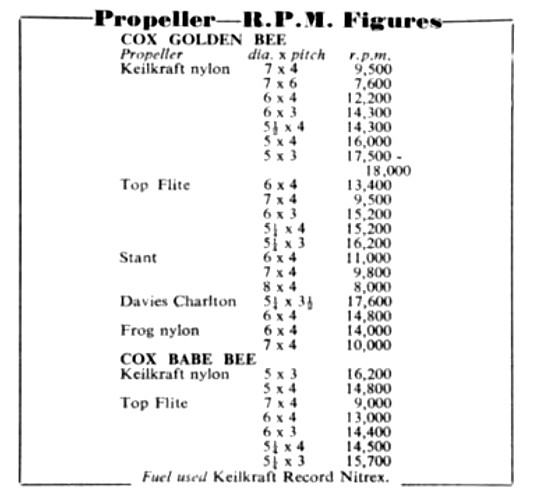
Warring obtained the same RPM with the white nylon Top Flite 5.25x4 and 6x3 props of 15,200 RPM on 15% nitro fuel. This may very well explain why that in my own personal judgment, I was basically obtaining the same result, and given the "relatively trim" cross section of the Q-Tee fuselage in sport plane terms, gave me close enough flights that I used both props interchangeably, depended upon hobby shop availability and cost. (I loved the T/F white nylons while they were available, they were the most affordable, and although atrociously out of balance, some sandpaper on the backside of the heavier blade fixed it.)
gkamysz wrote:Thrust vs airframe drag determines flight speed as we all know. The hard part is matching available power to prop diameter and pitch to achieve desired performance over the flight envelope. With fixed pitch, a compromise is made for climb rate or cruise/top speed.
I am not a contest flyer, interested in squeezing the last drop of performance out of my planes, but rather think of it as a "fun factor".

Thus, I try something.
 If it works good
If it works good  then I back up and try something different.
then I back up and try something different. 

GallopingGhostler- Top Poster


Posts : 5432
Join date : 2013-07-13
Age : 70
Location : Clovis NM or NFL KC Chiefs
 Similar topics
Similar topics» foam chuck glider, rc conversion
» 400ft altitude
» The Mark Boesen effect
» Torque effect on C/L Proto model
» ground effect tethered model
» 400ft altitude
» The Mark Boesen effect
» Torque effect on C/L Proto model
» ground effect tethered model
Page 1 of 1
Permissions in this forum:
You cannot reply to topics in this forum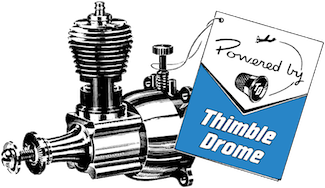
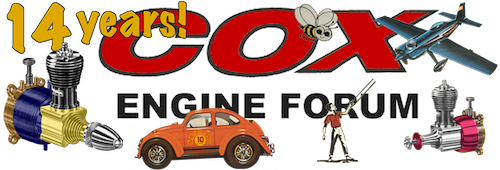
 Rules
Rules
